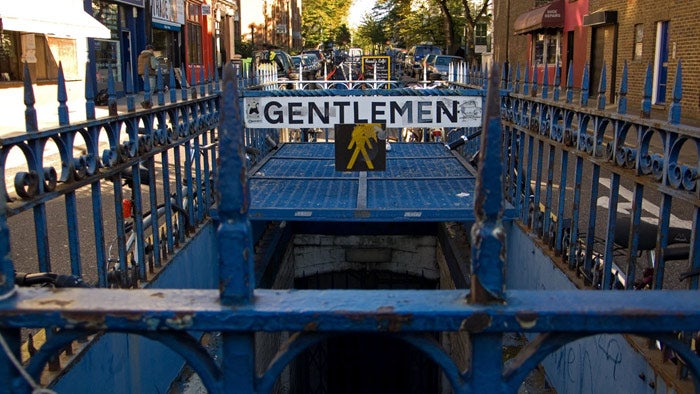New Labour's latest target for modernisation: Britain's public lavatories

In Victorian times they were the pride of town planners: minor gems of architectural and plumbing excellence on every High Street providing a much-needed rest stop for passers-by.
But years of budget cuts, developers and vandals have taken their toll on thousands of municipal lavatories.
Yesterday ministers launched their first national strategy to reverse the trend and bring back to Britain the heyday of the public loo. In an appeal to pub and shop owners to open up their facilities to the public, a 56-page blueprint said a greater sense of community spirit was needed to restore the public conveniences to their former glory. Ideas put forward included a scheme – dubbed "satlav" – to give visitors unfortunate enough to be caught short directions to the nearest loo on their mobile telephone.
The MPs, led by Hazel Blears, the Secretary of State for Communities and Local Government, also pledged to give councils the power to charge for lavatories that they own and run. Hailing the strategy as the start of a significant shift in policy to "take the taboo out of toilets", they encouraged local authorities to give people more access to the facilities.
But the issue immediately turned into a political row, with Tory MPs saying the strategy would spell the end for the free public loo. Campaign groups also urged ministers to force councils to provide a high quality lavatory in every town.
The first public lavatories were opened more than 150 years ago when Victorian civic leaders set about trying to promote public health and clean up the streets of Britain.
The network they built has since been hailed as marvels of Victorian municipal design, some of them mini-palaces of copper, marble, glass and porcelain.
But, according to the British Toilet Association, as many as 5,000 public lavatories have closed in the past decade, halving the number of conveniences.
Yesterday's strategy put forward the idea of "community toilet schemes", under which councils pay businesses to open up access to their lavatories, and urged planners to insist that developers make provision for public conveniences in their building schemes.
Richard Chisnell, director of the British Toilet Association, warned that without making it a council's duty to provide conveniences the strategy was hastening the demise of municipal loos.
Eric Pickles, the shadow Local Government minister, said: "Thanks to Labour's fiddled funding, town halls across the country have already been forced into closing public lavatories. Now the public face the end of free public toilets. Yet this comes at a time when Labour's reckless licensing laws are putting more people on the streets at night after hours of drinking. I fear the result will be misery for local residents the next morning."
Julia Goldsworthy, the Liberal Democrats' local government spokesman, added: "There is a real risk that these changes could be the thin end of the wedge and lead to fewer services rather than alternative services."
The Communities minister Baroness Andrews said: "Some people may find the whole idea of a strategic guide on public toilets funny.
"But let's remember that there are serious issues too that make public access to toilets vital for many people."
Subscribe to Independent Premium to bookmark this article
Want to bookmark your favourite articles and stories to read or reference later? Start your Independent Premium subscription today.

Join our commenting forum
Join thought-provoking conversations, follow other Independent readers and see their replies